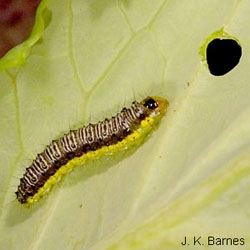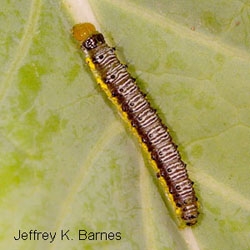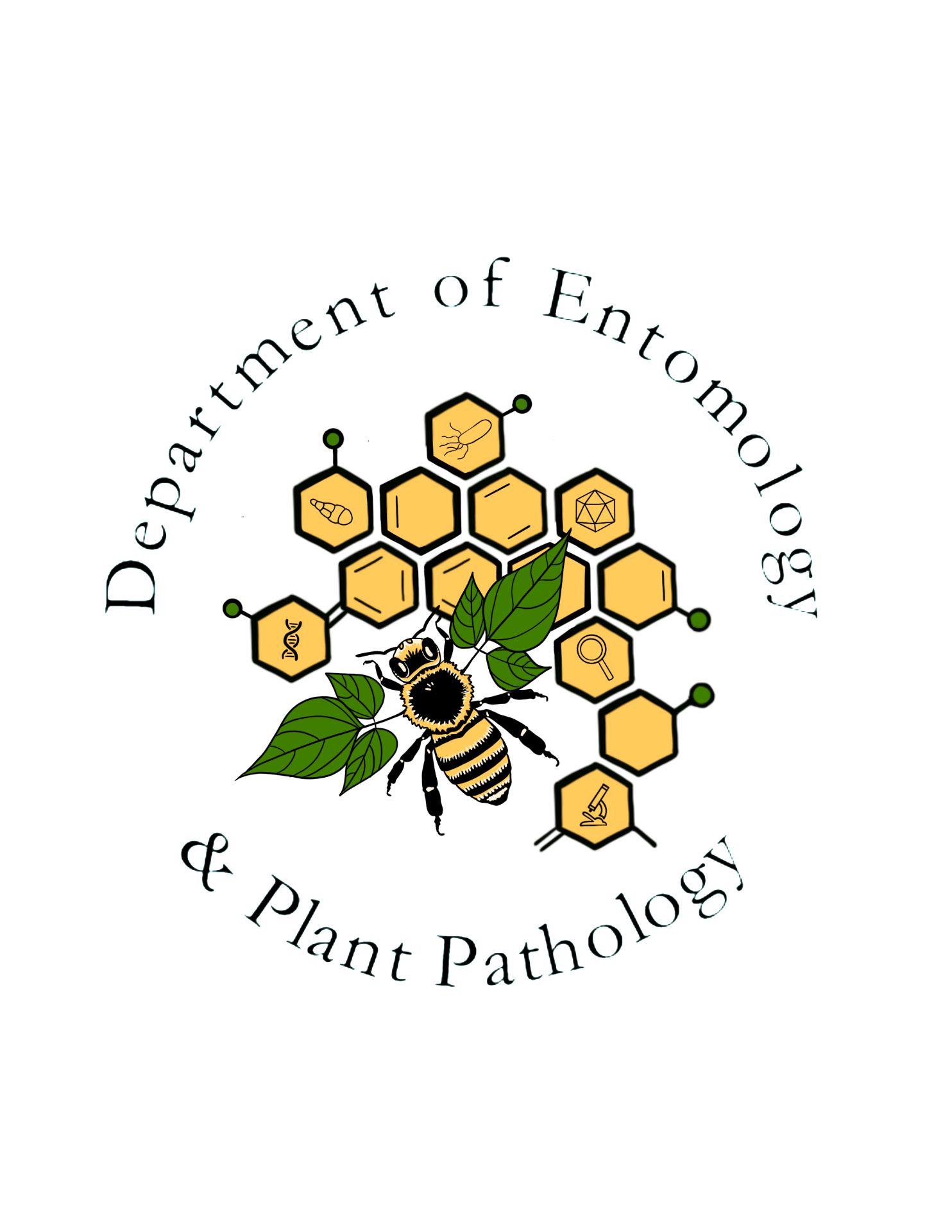Cross-striped cabbageworm
Order: Lepidoptera
Family: Pyralidae
Genus and species: Evergestis rimosalis (Guenée)


The cross-striped cabbageworm is a pest of Brassica crops, including cabbage, broccoli, turnips, Brussels sprouts, collards, rutabaga, rape, cauliflower, kale, and related plants. Field tests have shown that Brussels sprouts and collards are the most preferred hosts. Cabbage and kale are the least preferred. Usually the caterpillars are present in low densities, but populations can become dense and destructive in some years. After adults emerge from pupae in the soil, they mate and lay thin, oval, flattened eggs that overlap like fish scales. Because eggs are laid in small masses of 20 to 30, individual scattered plants can be infested with large numbers of caterpillars. Eggs hatch after 2–10 days. Newly hatched larvae have uniformly gray bodies sparsely covered with hair-like setae. They usually feed on the undersides of Brassica leaves, creating small pinholes. More mature larvae have bluish-gray bodies up to 25 mm long with narrow, black, transverse stripes. They tend to feed on the outside of the head, or they burrow into the developing head. Larvae pupate after 2–3 weeks, and adults emerge from pupae in 9–11 days. Adults live for 1–3 weeks. There are several generations per growing season. In North America, this species occurs from southern New York State, West Virginia, Illinois, Colorado and Washington in the north, and from Florida to Texas and Mexico in the south. It has also been reported to occur on Prince Edward Island in Canada.
